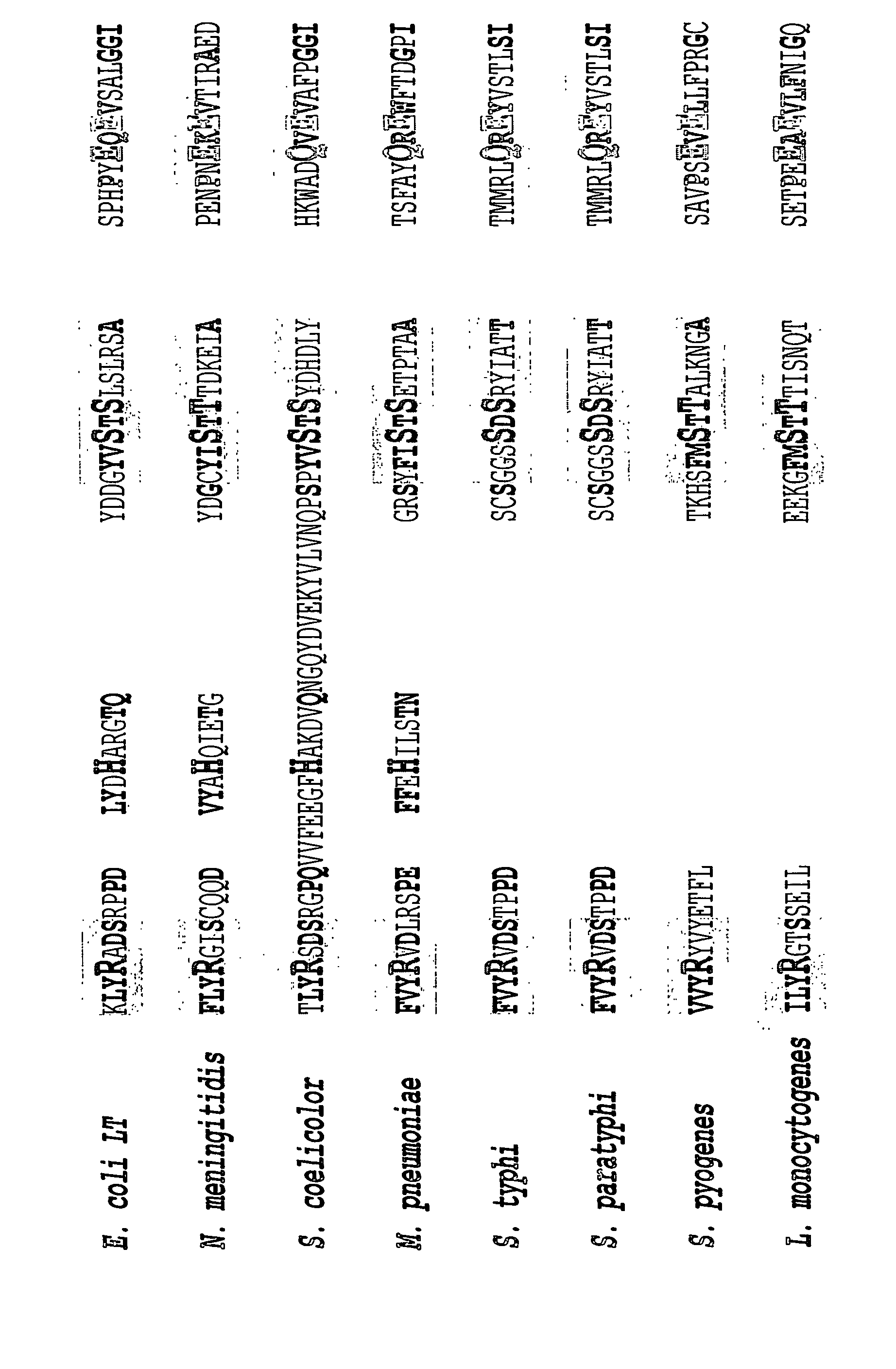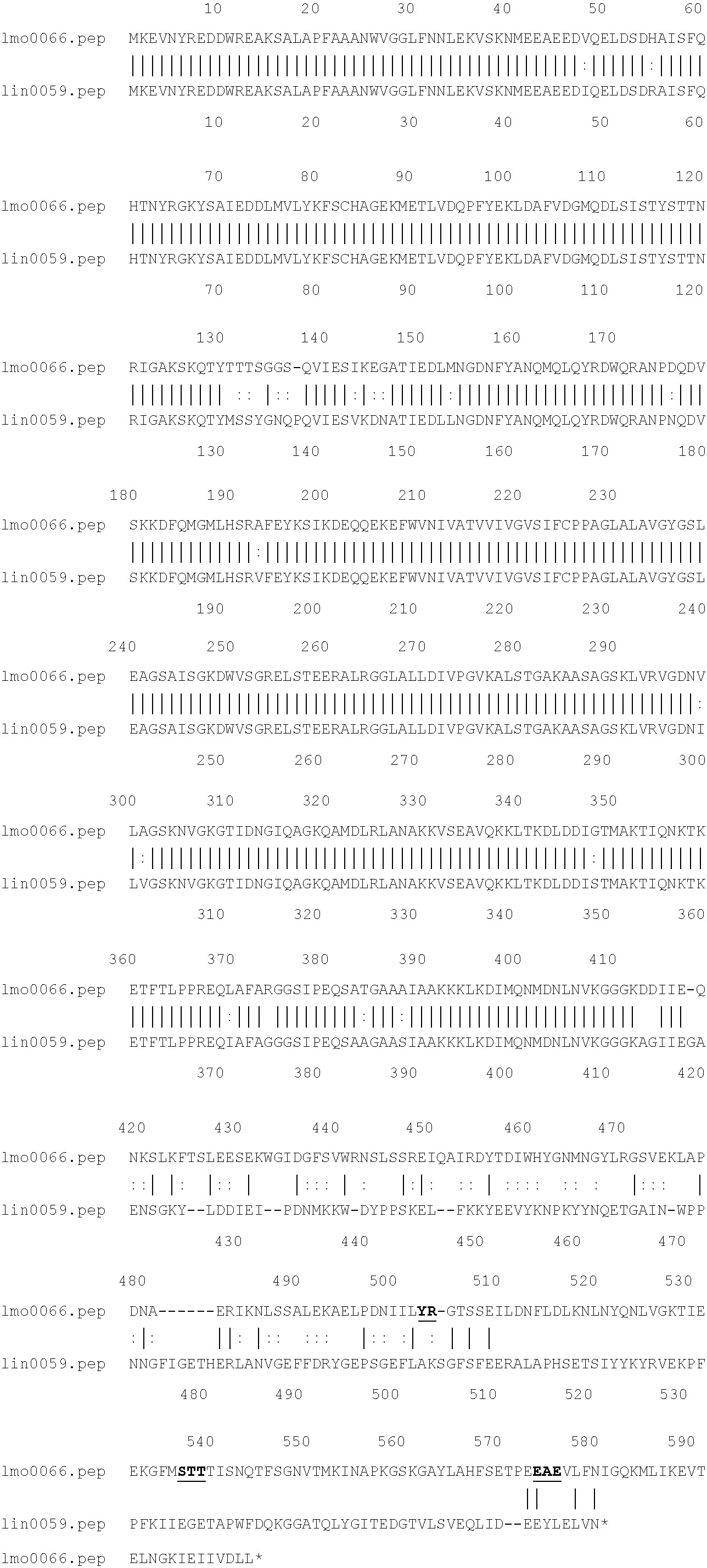ADP-ribosylating toxin from listeria monocytogenes
a technology of ribosylated toxin and listeria monocytogenes, which is applied in the field of adpribosylating bacterial toxins, can solve the problems of protein retention of toxic activity in vaccines, and achieve the effect of efficient harvesting and facilitating the isolation and purification of recombinant proteins
- Summary
- Abstract
- Description
- Claims
- Application Information
AI Technical Summary
Benefits of technology
Problems solved by technology
Method used
Image
Examples
Embodiment Construction
Toxin Gene from Listeria Monocytogenes
[0242]A protein with amino acid sequence was identified in L. monocytogenes (strain EGD-e). This is encoded by a gene having nucleotide sequence .
[0243]The protein (‘lmo0066’) shows only 28.0% identity to the iota toxin component Ia from Clostridium perfringens [iota-ia_clop; I40861] over a 200aa overlap:
[0244]
The L. monocytogenes protein therefore shows only a low level of identity with this toxin. However, a more detailed analysis of alignments in the regions of key catalytic residues reveals good conservation (FIG. 1).
[0245]The protein (‘lmo0066’) shows 79.9% identity to a hypothetical protein from Listeria innocua [lin0059] over a 518aa overlap:
[0246]
However, lin0059 does not contain the conserved catalytic residues, as highlighted above. Since L. innocua is not pathogenic, this indicates that the lmo0066 toxin activity may be of importance in enhancing the virulence of pathogenic species of Listeria.
[0247]It will be understood that the i...
PUM
| Property | Measurement | Unit |
|---|---|---|
| size | aaaaa | aaaaa |
| diameter | aaaaa | aaaaa |
| diameter | aaaaa | aaaaa |
Abstract
Description
Claims
Application Information
 Login to View More
Login to View More - R&D
- Intellectual Property
- Life Sciences
- Materials
- Tech Scout
- Unparalleled Data Quality
- Higher Quality Content
- 60% Fewer Hallucinations
Browse by: Latest US Patents, China's latest patents, Technical Efficacy Thesaurus, Application Domain, Technology Topic, Popular Technical Reports.
© 2025 PatSnap. All rights reserved.Legal|Privacy policy|Modern Slavery Act Transparency Statement|Sitemap|About US| Contact US: help@patsnap.com



